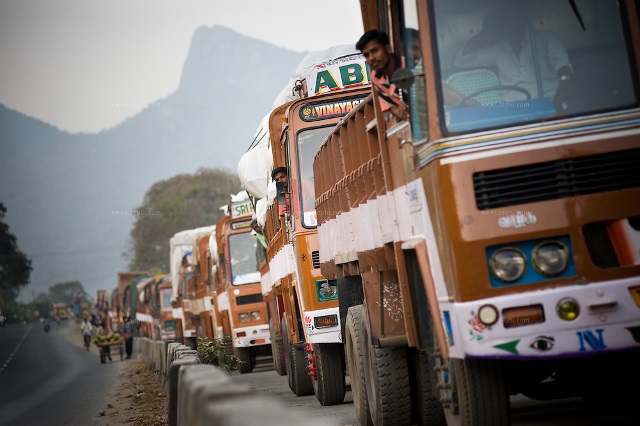
You must have seen many times long queues of trucks on the check post gate waiting to get clearance to enter into another state. These State border check posts scrutinize material and location-based tax compliance, resulting in delays in delivery of goods and cause environmental pollution as trucks queue up for clearance. Many times they use to pay heavy bribes also to the officials to clear the vehicle.
As many as 22 states, including Delhi, West Bengal, and Maharashtra, have abolished check posts within three days of the implementation of the Goods and Services Tax (GST) as there is a new system is implemented under GST to replace this whole system all over in India.
Eight states, including Assam, Punjab, Himachal Pradesh, and some north-eastern states, are also in the process of abolishing check posts, a finance ministry statement said.
State border check posts scrutinize material and location-based tax compliance, resulting in delays in delivery of goods and cause environmental pollution as trucks queue up for clearance.
One of the key objectives of the GST, which came into effect on July 1, was to make India a single market where goods and services can flow seamlessly.
The other important states which have abolished the check post include Uttar Pradesh, Bihar, Haryana, Gujarat, Madhya Pradesh, Andhra Pradesh, Karnataka, Kerala, and Tamil Nadu.
With the abolition of check posts, the long queues often witnessed at state borders will not be seen now. Also, there will be clear transparency in the movement of vehicles as the transporter needs to generate permits online and the same will be tracked through the GST portal.
Related Articles
About www.einvoice1.gst.gov.in
The www.einvoice1.gst.gov.in is the official E Invoice portal of GST in India. Therefore, one must visit this website to generate e-invoices. more
What is E Invoice under GST?
E-invoice is an electronic invoice generated on the e-invoice 1 portal of India. The taxpayer has to upload the invoice details on this portal. more
E way bill under GST
The e-way bill under GST is an electronic document generated on the GST portal evidencing the movement of goods from one place to another. more
GST Launch Date in India
The GST in India came into implementation on 01st July 2017. The official inauguration was on done 30th June 2017 in the parliament of India. more

